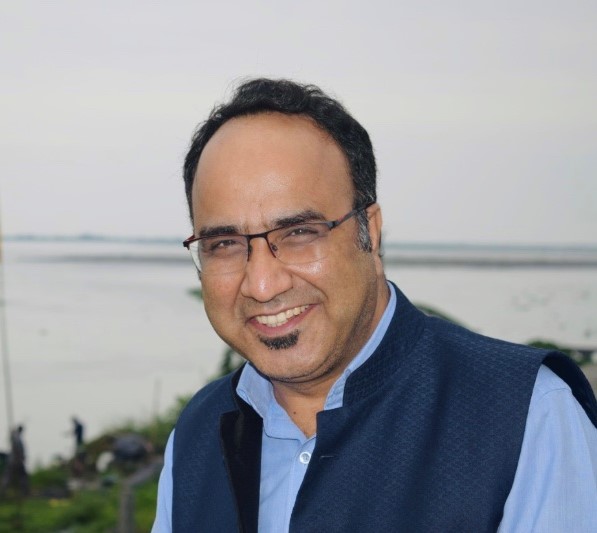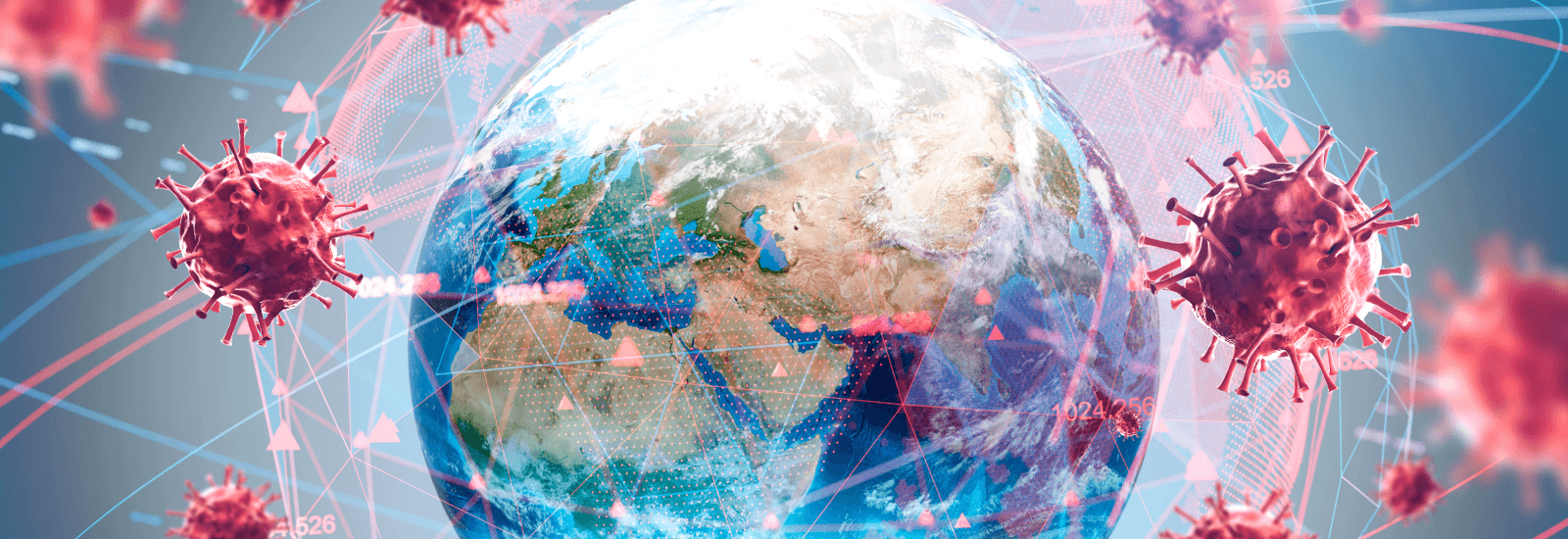The responses have been given by Dr Anil Koul, Vice President for Global Public Health and Infectious Diseases Discovery unit at Johnson and Johnson (J&J) Pharmaceuticals

Dr Anil Koul is currently Vice President and Head for Global Public Health Discovery Research and Partnerships at Johnson and Johnson (J&J). He also currently serves as a member of the Board of Directors at Janssen Pharmaceuticals NV, European unit of J&J and CSIR’s Scientific Advisory Board. Till recently he served as Director of Government of India’s premier biotechnology laboratory, CSIR-IMTech (Institute of Microbial technology).
His big career milestone was his role in the discovery & development of Bedaquiline – the first drug to be approved in last 45 years for treatment of drug-resistant tuberculosis. Till date, Bedaquiline has reached to more than 200,000 patients in 131 countries and is on list WHO’s list of essential medicines. Anil has more than 20 years of experience in scientific innovation and is bestowed with many awards including the ‘Sun Pharma Research Award’ and the ‘Johnson Medal’.
Anil has recently been appointed as Adjunct Professor of Translation Research at London School of Hygiene and Tropical Medicine (LSHTM), where he will setup a laboratory of Translation Discovery.
You have been a scientific leader in the field of public health and infectious diseases. We are sure you might have faced this question already many times but from our readers perspective we need your view point on COVID-19? What is the end game here? Does infection remain for a year or will we soon get over it by developing herd immunity or a vaccine saves us in the next six months?
COVID-19 belongs to a group of viruses called coronaviruses that attack the respiratory system. Developing an effective vaccine will be critical if we are to protect people against the novel coronavirus and combat future outbreaks.
Since the early days of the outbreak, Johnson & Johnson has been working with industry partners, governments and health authorities to help end the fast-moving COVID-19 pandemic through the development of a preventive vaccine candidate against SARS-CoV-2. The first batches of a SARS-CoV-2 vaccine are expected to be available for emergency use in early 2021—a substantially accelerated timeframe in comparison to the typical vaccine development process. Our goal is to provide a global supply of more than one billion vaccine doses through the course of 2021, provided the vaccine is safe and effective.
At this stage, we cannot comment on whether herd immunity against COVID-19 will happen. What we do know is herd immunity is dependent on a significant proportion of a population being vaccinated. The higher vaccination rates are, the harder it is (and the longer it takes) for a disease to spread. To ensure protection within a population or community, vaccination rates must achieve a certain threshold. So, our single focus right now should be on developing a safe and effective vaccine that can be made available to as many people as possible around the world.
How does coronavirus compare with other outbreaks and how the solutions provided for tropical diseases earlier have similar effects on coronavirus?
Coronaviruses (CoV) are a large family of viruses that can cause illnesses ranging from the common cold to more severe diseases, such as Middle East Respiratory Syndrome (MERS-CoV) and Severe Acute Respiratory Syndrome (SARS-CoV). A novel coronavirus (nCoV) is a new strain that has not been previously identified in humans, which is what the current outbreak is.
Thanks to prior SARS and MERS viruses, we understand coronavirus biology relatively well. However, there remain some important gaps in our collective understanding. The spike protein of the virus that causes COVID-19, SARS-CoV-2, and that of the SARS virus we saw in 2003 are very similar. This spike protein helps the coronavirus attach to and enter human cells by binding to receptors on the cells surface, called ACE2 receptors, which help regulate blood pressure.
The biological implications of viral attachment or binding to ACE2 receptors are not fully understood in COVID-19 cases. We do know that patients with hypertension or diabetes are at an increased risk for developing more severe cases of COVID-19. But we don’t understand very well the way that anti-spike protein antibodies that block the attachment of the virus to cells in the body.
This latest outbreak of a novel pathogen once again reinforces the importance of investing in preparedness, surveillance and response to ensure the world remains ahead of potential pandemic threats. For our part, Johnson & Johnson began working on a vaccine for COVID-19 the moment the sequence was announced and recently announced the selection of a lead COVID-19 vaccine candidate.
We are accelerating our research & development and in parallel rapidly expanding our manufacturing capacity globally with a goal to supply more than one billion doses of a safe, effective and affordable COVID-19 vaccine on a not-for-profit basis for emergency pandemic use.
The Company’s vaccine program is leveraging Janssen’s AdVac® technology that provides the ability to rapidly develop new vaccine candidates. This technology was used in the development of our investigational Ebola vaccine, which has been deployed in the Democratic Republic of the Congo (DRC) and Rwanda, and was also used to construct our HIV, RSV and Zika vaccine candidates.
India’s disease burden has been shifting from communicable to Non Communicable. Hence, resources as well. When it comes to infectious diseases, can you identify the thrust areas where we need to invest to be a more resilient society like rapid diagnostics, PPE, in general infection prevention and control, surveillance mechanisms and vaccine development etc.
Infectious diseases have long posted a grave threat to public health in India – even before COVID-19. One of the longest-standing and most insidious epidemics we have faced is tuberculosis (TB) – a disease as old as humankind.
In 2018, TB claimed more than 1.5 million lives globally. India shares a disproportionate burden of this disease with 79,144 deaths reported in 2018. This problem is compounded with the high incidence of drug-resistant tuberculosis in the country. Currently, India has around 130,000 multi-drug resistant TB cases, and only around 50% of these patients are diagnosed. This gap is the biggest barrier to treatment access and must be urgently addressed if India is to reach its ambitious goal of ending TB by 2025.
The COVID-19 pandemic has further aggravated the situation and exposed the vulnerabilities of the already overburdened public health systems. The lockdown restriction is a major hurdle to TB patients seeking healthcare and may cause delay in diagnosis, treatment interruptions and disease transmission. Greater efforts are urgently needed to address this serious threat.
For the past 15 years, our team of scientists at Johnson & Johnson has been working tirelessly to discover new TB drugs. Several years ago, we succeeded in launching bedaquiline, the first TB drug in nearly 50 years. In addition to this, we have been working with state governments and non-governmental organizations for the past four years to provide over 50,000 X-ray tests, approx. 32,000 molecular tests, and 4,600 pre-evaluation tests to enhance early diagnosis. We have also trained more than 15,000 physicians on the clinical management of TB and MDR-TB and supported community awareness programs.
These efforts are part of our company’s longstanding commitment to tackle TB and the growing challenge of antimicrobial resistance (AMR) globally. AMR claims more than 700,000 lives per year – and approximately one-third of these deaths are the result of DR-TB. In July 2020, J&J joined committed $100 million to the Global AMR Action Fund, which will collectively invest $1 billion to bring new drugs to fight superbugs. The fund aims to bring 2-4 new antibiotics to patients by the end of this decade. The fund will help pool the scientific resources of the industry while working with governments, NGOs, biotech, and other laboratories to discover new drugs and implement sustainable R&D innovation policies. This is the largest collective venture ever created to address AMR – a piece of great news for India and other AMR high-burden countries.
The ever changing molecular profile of the corona virus will make it more adaptable for longer sustainability or there are other modes for its survival in the environment?
More than 50,000 genomes of the SARS-CoV2 have been uploaded by scientists on a shared database across the world. In the analysis of these genetic and sequence databases, about 70 percent were found to carry the mutation on the spike protein, which helps the virus to attach to receptors on respiratory cells called ACE2. This research published recently in prestigious journal Cell (Korber B et al, Cell, 2020) suggests that the mutation D614G may provide a better chance for the virus to infect or enter host cells due to increased spike protein on the surface. However, very preliminary data suggest that this may not worsen the patient outcomes, which are critical to controlling this pandemic. From the evolutionary and viral population dynamics perspective, G614 variation in spike protein may have a fitness advantage. But we need to continue sequencing of viral isolates for the changes in the spike and other proteins so that it helps us understand viral spread, infectivity, and pathogenesis, and help us develop better antibodies, vaccines, or small molecules therapeutics.
Does BCG/polio vaccination has any relevance to prevent COVID-19?
At this stage, there is no evidence that the BCG vaccine protects people against infection with COVID-19 virus. We understand that some clinical trials are underway to address this question. So, we should wait for the scientific results and evidence when it is available. In the absence of evidence, WHO does not recommend BCG vaccination for the prevention of COVID-19.
As a scientific leader, what inspires you on a daily basis? Your advice for young readers on what India needs and how can we do better scientific research that has sustainable impact?
My advice to the next-generation scientists is that never compromise on the pursuit of excellence – please don’t take shortcuts. Science and innovation are a tough journey, but in the end, success and satisfaction will be yours. Always see what you are leaving for the next generation – a product, an ethos, and an opportunity.
It is important to remember that real science and discoveries need some level of stubbornness, never to be afraid at the face of failure. As someone said, “My courage always rises at every attempt to intimidate me.” This holds true for everyday science we do as long as our pursuits and intents are honest.
Interviewed by Dr. Debleena Bhattacharya, associate editor, InnoHEALTH magazine. The interview was based on his valuable scientific insights on the recent global unprecedented situation due to COVID19 and measures taken to control them.

